High-Intensity Focused Ultrasound (HIFU) in Delhi
Search and Compare the Best Clinics and Doctors at the Lowest Prices for High-Intensity Focused Ultrasound (HIFU) in Delhi
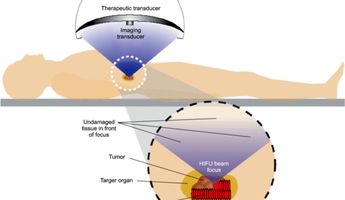
Find the best clinics for High-Intensity Focused Ultrasound (HIFU) in Delhi
With Medijump you can browse 2 facilities offering High-Intensity Focused Ultrasound (HIFU) procedures in Delhi. The cheapest price available is $7,003 in Delhi. And for the cheapest price globally, prices start from $56 in Indonesia.
High-Intensity Focused Ultrasound (HIFU) in India
Price: $ 7,003
High-Intensity Focused Ultrasound (HIFU) in Delhi
Price: $ 7,003
Indonesia offers the best prices Worldwide
Price: $ 56
From 166 verified reviews
mohini bali, 30 August 2020
Dr Rajat Goel ( Bariatric Surgeon) He is best Dr in this world.
From 164 verified reviews
Sharanjiv kumar, 21 September 2020
Excellent Super Speciality Hospital
Compare Before & After Photos of _procedure_photos.phpHigh-Intensity Focused Ultrasound (HIFU)
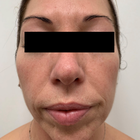
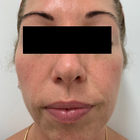
Front view

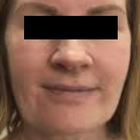
Front view


Front view
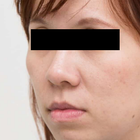
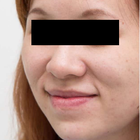
Front view
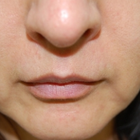
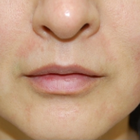
Front view
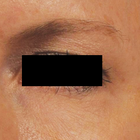
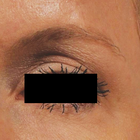
Front view
WHY US?
At Medijump, we're making medical easy. You can search, compare, discuss, and book your medical all in one place. We open the door to the best medical providers worldwide, saving you time and energy along the way, and it's all for FREE, no hidden fees, and no price markups guaranteed. So what are you waiting for?

Free

Best Price

Widest Selection

Risk-Free
What you need to know about High-Intensity Focused Ultrasound (HIFU) in Delhi
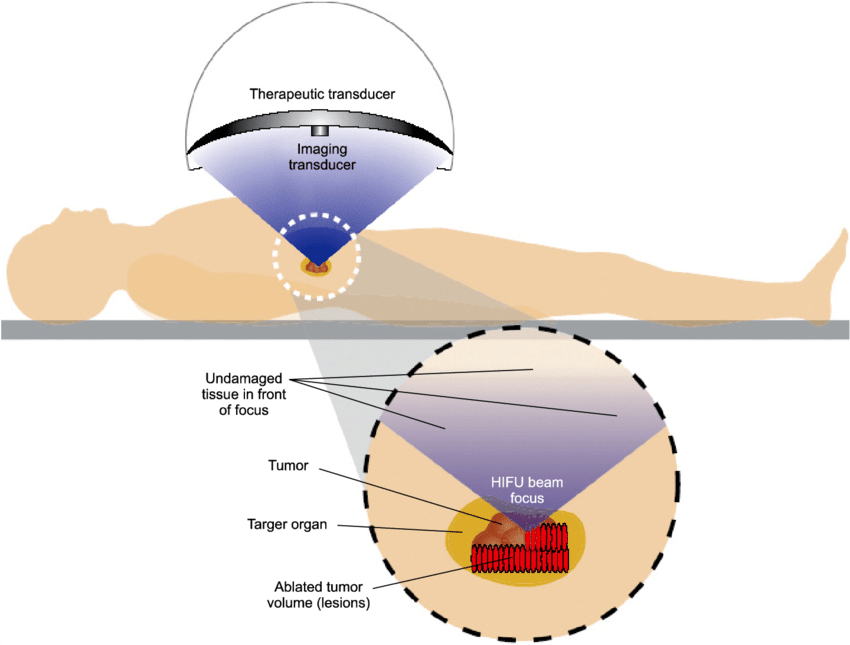
High intensity focussed ultrasound technique (HIFU) also known as focussed ultrasound surgery (FUS), uses non-ionizing ultrasound waves to heat up your body tissues. Temperature can be increased up to 70 to 90°C. These sound waves do not pass through air and bone. It is used for multi-purposes. It works to increase your blood, and lymph flow stimulates cell division and destroys tumor cells. It can also be used to treat a number of disorders including various types of cancer and uterine fibroids. Its use in the treatment of prostate cancer is gaining fame. It can also be used for cosmetic reasons, to reduce wrinkles, aging lines and to lift your loose skin. It is found to be most effective on jawline and cheeks. It should always be performed by the experts because the sonication of the wrong tissue can be dangerous. Also, there might be incomplete destruction of the tumor. Some areas of your body can not be sonicated as they are sensitive to sound waves, this should also be kept in mind while performing HIFU. It can only be used to treat localized cancer and tumors. Cancer which has spread cannot be cured through HIFU.
As HIFU is involved in the treatment of a number of diseases, before going through it, you may suffer from those diseases. These disorders include ovarian fibroids, different types of cancers, breast tumors, Parkinsonism, and a number of other neurological disabilities. You might have loose skin of face, neck, and chest. Vaginal laxity is also a problem. After HIFU, your tumors are destroyed, cancer cells are killed and diseases are cured. Your loose skin looks tightened and strengthened. Wrinkles and aging lines are gone. Vaginal and skin laxity are removed. You look younger than your actual age.
What does a High-Intensity Focused Ultrasound (HIFU) Procedure Involve?
The procedure begins with cleaning the area to be sonicated with alcohol swabs so that there are no germs and bacteria. In the next step, a gel is applied to your skin. Magnetic resonance imaging (MRI) or ultrasound is used to focus the exact tissue, organ or tumor that needs to be treated. The individual is sedated to avoid discomfort and pain during the procedure. After this, the procedure differs according to the purpose of HIFU. In general, an acoustic lens is used to focus sound waves on the targeted organ. The transducer device is used to emit sound waves. The sound waves propagate through the various layers of skin to reach the tumor to be destructed. When sound waves reach the tumor, heat is produced there increasing the temperature up to 90°C in 20 seconds only. This heat starts destroying the cancer cells there.
How Long Should I Stay in Delhi for a High-Intensity Focused Ultrasound (HIFU) Procedure?
It is a 1 to 4 hours procedure. It depends upon the purpose for which HIFU is being performed. Generally, it is an outpatient procedure. You can be discharged from the hospital after the effects of the sedatives subside. You should plan to stay in Delhi for at least 14 days after your Procedure, this will allow for the initial recovery and follow-up check-ups, etc.
What's the Recovery Time for High-Intensity Focused Ultrasound (HIFU) Procedures in Delhi?
The recovery time differs and depends upon the purpose for which HIFU is being carried out. You may suffer from pain and discomfort for 3 to 4 days after the procedure. The soreness and swelling will subside in 2 to 3 weeks. It has less recovery time and has less invasive techniques approved by the FDA. The Non-ionizing radiations used in this technique are the least damaging.
What sort of Aftercare is Required for High-Intensity Focused Ultrasound (HIFU) Procedures in Delhi?
Aftercare differs in accordance with the purpose for which HIFU is done. However, the following points should be kept in mind to look after yourself at home after being discharged:
- Visit your doctor on a regular basis.
- Do not drive home if you are still under the influence of sedatives.
- Eat healthily. Follow a diet plan made by an expert. It can help you recover faster.
- Take your medicines as and when prescribed by the doctor.
- Take a rest and give yourself time to recover.
- In the case of HIFU for cosmetic reasons, avoid contact with sunlight and wear sunscreen while going out.
- Do not rub or massage your skin.
- Look for something wrong. If you find any sign, visit your doctor immediately.
- In case of any discomfort, contact your physician. Do not go for self-medication.
What's the Success Rate of High-Intensity Focused Ultrasound (HIFU) Procedures in Delhi?
HIFU has been found to be very successful in the treatment of most of the disorders. However, the success rate differs for each purpose. According to a study, the overall success rate for prostate cancer treatment was reported to be 84%. Cancer patients were divided into 3 groups. The high-risk group showed a low success rate. The intermediate group showed a higher success rate reaching 83.4% and the low-risk group showed the highest success rate of 94.2%. It is also found to be very effective and successful in treating skin laxity and uterine fibroids.
Are there Alternatives to High-Intensity Focused Ultrasound (HIFU) Procedures in Delhi?
In actuality, HIFU itself is a non-surgical alternative to most of the surgeries. However, the following are some useful alternatives to HIFU:
- Dermal fillers: it is an alternative of HIFU for a facelift. Injections containing Botox, Restylane, etc. are given into your skin to make it look lifted and plump. Your skin looks wrinkle-free and you look younger than your age.
- Uterine artery embolization: this is a treatment for uterine fibroids. Arteries supplying the uterus are occluded by injecting an embolic agent into it. This cuts off blood supply to the fibroids causing them to shrink and ultimately die.
- Radical prostatectomy: also known as an open prostatectomy, entire prostate and seminal vesicle along with some lymph nodes in the pelvic area is surgically removed. Nerve damage is avoided to ensure erection and active sexual life afterward.
- Bilateral orchiectomy: in this surgery, both the testicles are surgically removed. This helps in treating prostate cancer.
- Brachytherapy: in this therapy, radioactive substances are directly inserted into the prostate gland. These are called seeds which give off radiations around the area where they were placed.
Whilst the information presented here has been accurately sourced and verified by a medical professional for its accuracy, it is still advised to consult with your doctor before pursuing a medical treatment at one of the listed medical providers
No Time?
Tell us what you're looking for and we'll reachout to the top clinics all at once
Enquire Now

Popular Procedures in Delhi
Prices Start From $979

Prices Start From $714

Prices Start From $16

Prices Start From $28

Prices Start From $53

Recommended Medical Centers in Delhi for High-Intensity Focused Ultrasound (HIFU)

- Interpreter services
- Translation service
- Religious facilities
- Medical records transfer
- Medical travel insurance
- Health insurance coordination
- TV in the room
- Safe in the room
- Phone in the room
- Private rooms for patients available

- Interpreter services
- Translation service
- Religious facilities
- Medical records transfer
- Medical travel insurance
- Health insurance coordination
- TV in the room
- Safe in the room
- Phone in the room
- Private rooms for patients available

- Interpreter services
- Translation service
- Religious facilities
- Medical records transfer
- Medical travel insurance
- Health insurance coordination
- TV in the room
- Safe in the room
- Phone in the room
- Private rooms for patients available

- Interpreter services
- Translation service
- Religious facilities
- Medical records transfer
- Medical travel insurance
- Health insurance coordination
- TV in the room
- Safe in the room
- Phone in the room
- Private rooms for patients available

- Interpreter services
- Translation service
- Religious facilities
- Medical records transfer
- Medical travel insurance
- Health insurance coordination
- TV in the room
- Safe in the room
- Phone in the room
- Private rooms for patients available

- Interpreter services
- Translation service
- Religious facilities
- Medical records transfer
- Medical travel insurance
- Health insurance coordination
- TV in the room
- Safe in the room
- Phone in the room
- Private rooms for patients available

- Interpreter services
- Translation service
- Religious facilities
- Medical records transfer
- Medical travel insurance
- Health insurance coordination
- TV in the room
- Safe in the room
- Phone in the room
- Private rooms for patients available

- Interpreter services
- Translation service
- Religious facilities
- Medical records transfer
- Medical travel insurance
- Health insurance coordination
- TV in the room
- Safe in the room
- Phone in the room
- Private rooms for patients available

- Interpreter services
- Translation service
- Religious facilities
- Medical records transfer
- Medical travel insurance
- Health insurance coordination
- TV in the room
- Safe in the room
- Phone in the room
- Private rooms for patients available

- Interpreter services
- Translation service
- Religious facilities
- Medical records transfer
- Medical travel insurance
- Health insurance coordination
- TV in the room
- Safe in the room
- Phone in the room
- Private rooms for patients available
High-Intensity Focused Ultrasound (HIFU) in and around Delhi
Introduction
Delhi is officially known as the National Capital Territory of Delhi (NCT). It is home to the capital of India, New Delhi. With a population of over 18 million, it is the second most populous city in the country. The city is brimming with vibrant modern life but also still steeped in history. People come to the city for its cultural richness and gastronomic scene.
Recently, Delhi has emerged as a medical tourists’ favorite destination. It’s the perfect place for those who seek low cost high-quality, world-class healthcare. India continues to expand its medical tourism sector with Delhi as one of the top hubs for medical facilities. Among the leading hospitals in Delhi are Max Super Specialty Hospital, Apollo Hospital Indraprastha, and BLK Super Specialty Hospital. Breast Augmentation and heart surgery procedures are two of the most popular procedures in the city. Patients come to Delhi for the following reason:
- State of the art medical facilities with international and local accreditation
- Skilled doctors, many of which trained in the UK
- English speaking doctors and staff
- Wide range, cost-effective procedures
- Traditional healthcare therapies and practices such as Ayurveda and yoga
Popular Areas in Delhi
Delhi is overflowing with enchanting history and colorful modern life. The city is made of layers of history, temples, monuments, markets, and UNESCO World Heritage Sites. Many tourists come to witness its charm and discover its hidden treasures. Go to Old Delhi and visit the Red Fort where a load of people fell in love with its beautiful structure influenced by Islamic, Persian, Hindu, and Timurid traditions. Learn Islamic history in one of the largest mosque in India, Jama Masjid. Shop in Chandni Chowk Market, the largest shopping hub in Delhi. Pay your respect in Raj Ghat, a memorial dedicated to Mahatma Gandhi.
There is also New Delhi, India’s capital, where you can stroll around India Gate, a war memorial that was inspired by the Arc de Triomphe. Humayun’s Tomb, the tomb of the Mughal Emperor Humayun, is also worth a visit for anyone who loves history. Don’t forget to go to the Gandhi Museum (Gandhi Smirti) to learn more about the leader of Indian independence’s life. Tourists can also visit an enthralling historical site known as Purana Qila. In your spare time, you can shop in Janpath Market and Sarojini Market.
South Delhi has many sites to enjoy such as the unique Lotus Temple, the soaring tower of victory Qutab Minar, and the thriving nightlife of Hauz Khas Village. This district also has a famous shopping paradise including Dilli Haat, Shahpur Jat, GK 1 N-block market, and Dastkar Nature Bazaar.
Weather and Climate in Delhi
Delhi has a high variation of temperature between summer and winter. Summer in Delhi can get really hot with an average temperature of around 32°C. The season starts in April to June and the temperature can reach as high as 46°C. It is advisable to avoid this season if you’re planning to do a lot of outdoor activities. The monsoon starts in late June to mid-September. The temperature usually falls to an average of 29°C, but it’s rainy and humid.
The temperature plummets during winter, ranging between 6°C to 7°C. This season starts in November and lasts until March. October to March is the best time to visit Delhi because the weather is neither too hot or too cold.
Getting Around in Delhi
Indira Gandhi International Airport, located 16 km from New Delhi city center, is the busiest airport in India. This airport serves domestic and international flights that connect the city with almost every country across the globe. Terminal 1 is used by budget airlines such as IndiGo and SpiceJet, while Terminal 3 is mainly used for international operations and several domestic flights.
The city center can be reached by bus, airport taxi, and metro. The bus is the most affordable option although it can be very crowded. Taxi is a good way to travel but always use licensed taxis such as WTi Cabs, Meru, and Mega Cabs. App-based taxis like Ola and Uber is another choice of travel. The fastest way to travel to Delhi’s city center is by The Delhi Metro. The travel time is less than 25 minutes and should cost around 10 INR to 60 INR.
There are several transportation modes to get around Delhi. The Delhi Metro is the best option to travel around because it offers comfort and fast travel. Taxis are widely available in the city. The easiest way to call a taxi is by the Ola app. It’s usually cheaper to use Ola than a local taxi stands.
For shortstops, opt for auto rickshaws. They’re affordable and easy to find. Make sure to negotiate the fare before getting in because most drivers will refuse using the meter. The drivers are also known to overcharge foreign visitors. Driving around Delhi is not recommended since the traffic can be time-consuming and there is a lot of bad driving. You can always hire a local driver if you want to get around by car.
Tourist Visas in Delhi
Citizens of Nepal and Bhutan can enter India without a visa. Citizens of Japan and South Korea can apply for a visa on arrival. Citizens of 150 countries can apply for e-Visa which is valid for 60 days. There are medical and medical attendant e-visas for tourists who come for healthcare. Other nationalities are required to apply and obtain a visa before entering the country.
All visitors must hold a passport valid for at least 180 days after their entry to India and should have at least two blank pages.
Additional Information
- Local Currency: the official currency is the Indian rupee (INR). 1 USD converts to 70 INR.
- Money & Payments: Major currencies such as US dollars, euros, and pounds sterling are easy to change throughout the city. The easiest way to exchange money is by using ATMs. Some shops, restaurants, and hotels will accept credit cards. It is advisable to always carry cash since a lot of places still accept cash only. Restaurants sometimes add a 10% service fee to the bills.
- Local Language: Hindi is the official language of Delhi. Urdu and Punjabi are widely spoken. Most people will be familiar with English. Many young people shop keepers, and tour guides can speak English very well.
- Local Culture and Religion: The major religion is Hinduism, followed by Islam, Christianity, Sikhism, Jainism, Buddhism, and Judaism.
- Public Holidays: The city celebrates major religions (Hindus, Muslims, and Christians) holidays. The city hosts many festivals all year round such as The Grub Fest, The Palate Fest, and Holi Festival.
Popular Searches
- Plastic Surgery in Thailand
- Dental Implants in Thailand
- Hair Transplant in Thailand
- Breast Augmentation Thailand
- Gastric Sleeve in Thailand
- Gender Reassignment Surgery in Thailand
- Laser Hair Removal in Bangkok
- Botox in Bangkok
- Dermatology in Bangkok
- Breast Augmentation in Bangkok
- Coolsculpting in Bangkok
- Veneers in Turkey
- Hair Transplant in Turkey
- Rhinoplasty in Turkey
- Stem Cell Therapy in Mexico
- Rhinoplasty in Mexico
- Liposuction in Mexico
- Coolsculpting in Tijuana
- Rhinoplasty in Korea
- Scar Removal in Korea
- Gastric Sleeve in Turkey
- Bone Marrow Transplant in India
- Invisalign in Malaysia
- Plastic Surgery in the Dominican Republic
- Tummy Tuck in the Dominican Republic
- Plastic and Cosmetic Surgery in Poland
- Rhinoplasty in Poland
- Hair Implant in Poland
- Dental Implants in Poland
- IVF in Turkey

